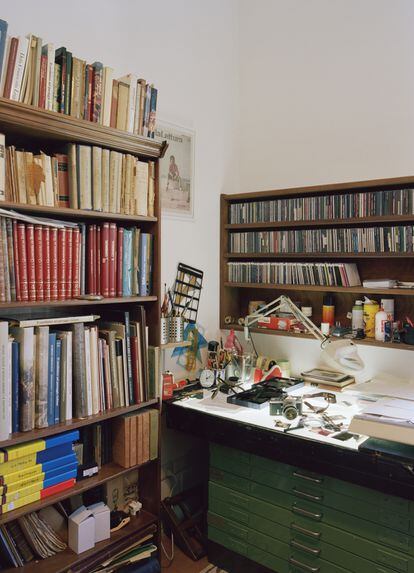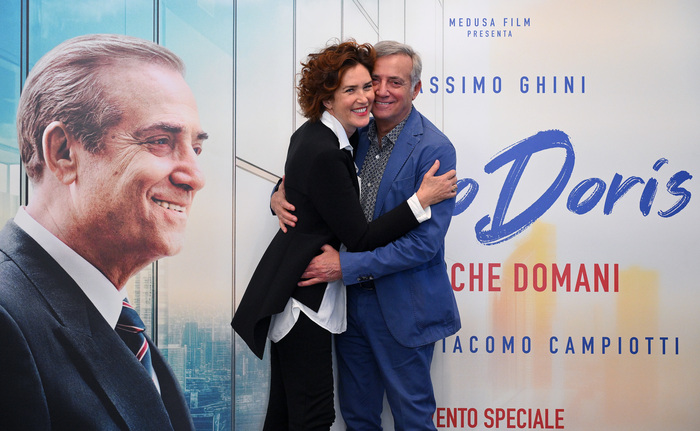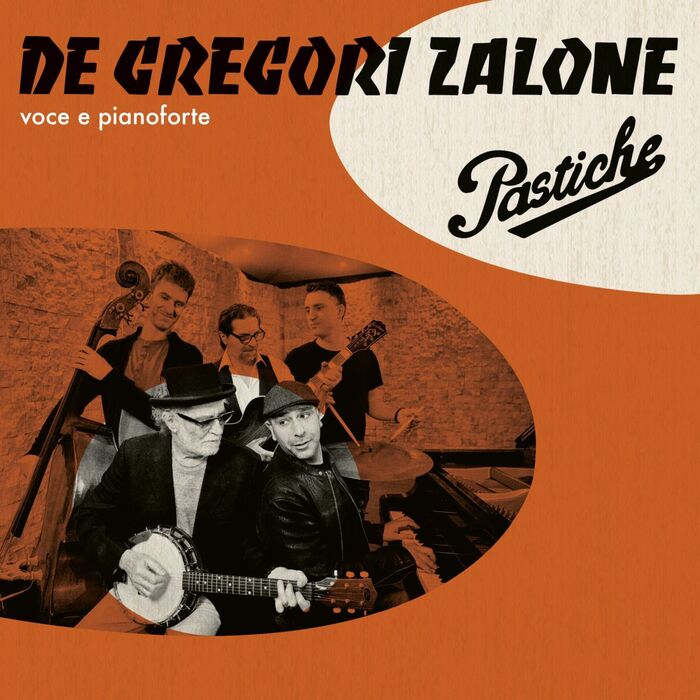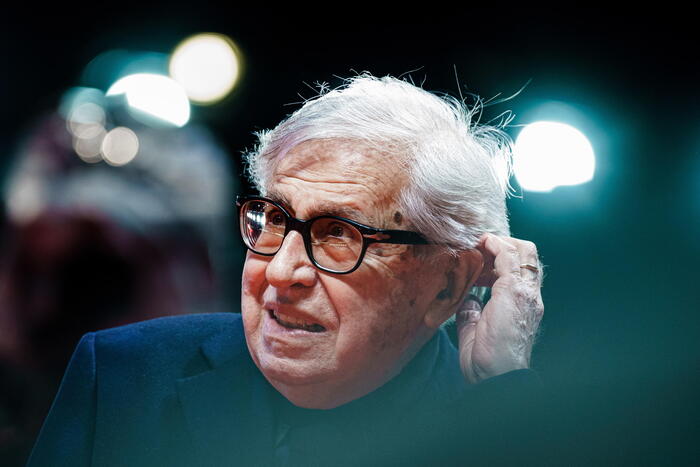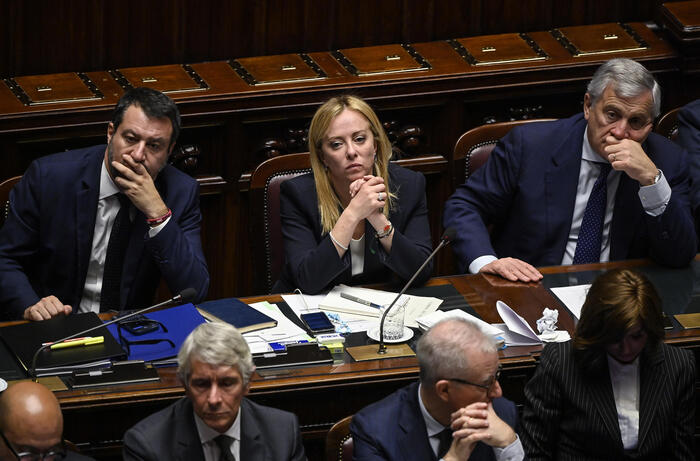In a destiny marked by this kind of double name, it could be said that Paolo di Paolo (Larino, 97 years old) was reborn twice.
The first, a few months old, when he was diagnosed with a fatal disease.
The family doctor advised the only remedy to regularly bathe the baby in a basin of Negroamaro, a wine from southern Italy whose properties should wake up the kid.
No one knows how, but he was cured and today he is close to one hundred years old.
The second came after feeling that he had already experienced many things and, having become a myth of photography, he decided to disappear.
That second advent occurred the day that his daughter Silvia, without knowing anything about her previous life, was looking for some old skis in the attic of her house and by mistake found a hidden treasure of hundreds of thousands of negatives that made up her father's formidable work. .
A photography genius who had decided to retire after only 16 years of work, when he was doing best, without leaving any trace.
Paolo di Paolo no longer bathes in wine, he jokes as he settles into his chair.
But at 97, he continues to drink around a liter of red a day and dress impeccably.
The legendary photographer, revered by illustrious figures such as the designer Alessandro Michele or the photographer Bruce Weber (who recently premiered his documentary The Treasure of His Youth: The Photographs of Paolo Di Paolo
at the Tui Play-Doc festival )
now lives in the popular neighborhood of San Lorenzo, in Rome, with his wife.
His daughter Silvia de him, the person who accidentally exhumed all of his work, a site of large already published portraits and another 254,000 unpublished negatives from between 1954 and 1968, accompanies him during the interview.
The photographer Paolo di Paolo, at his home.
Stefan Giftthaler
A man who abruptly abandoned his career and locked part of his identity inside a pile of old boxes.
That day in 1968 he decided never again to speak of that world of stars, filmmakers, fabulous writers and journalists who adored him and whom, since then, he placed in the vaporous category of a lost world.
It was precisely the day he closed
Il Mondo
, the unique weekly for which he had worked during all that time with an overflowing freedom and respect for the trade.
A closure that coincided with the advent of the world of
paparazzi
,
il pettegolezzo
and photography conceived as an intruder in the lives of celebrities.
Also with a certain personal boredom towards everything.
“Who was going to repost my photos?
Television had burned the possibility of making long and elaborate reports, ”she says.
“The final blow was when one day a newspaper director came to see me and told me: 'Anything that has some spice, bring it to me: your doors are open.'
I left his sad office and felt how those doors actually closed behind me.
The world of scandals was not part of my work.
And if I had insisted on continuing, my decline would have also started and today we would surely not be here”.
Panoramic view of Paolo di Paolo's office. Stefan Giftthaler
Di Paolo's work always orbited between the delicacy of his gaze and the terrible force of gravity of fundamental characters of the time such as Oriana Fallaci, René Clair, Giorgio De Chirico, Ezra Pound, Marcello Mastroianni or Anna Magnani, whom he portrayed in an unusual intimacy in his house in Circeo with his disabled son.
He also documented the almost hidden rituals of the old Roman black nobility, such as Princess Pallavicini's grand coming-out ball, where he was the only photographer allowed to enter;
or moments whose crackle in the midst of the political silence of two eras marked the definitive break with the past, such as the funeral of the Secretary General of the Communist Party, Palmiro Togliatti.
The country was already trembling with the first social detonations of the economic boom that modernized it in the sixties and the growing social tensions.
The miracle was also splitting him in two.
A fracture staged from north to south and that the country tried to sew with key infrastructures such as the Autopista del Sol, which crossed Italy and whose inauguration the young Di Paolo went to photograph.
That day, instead of photographing the bishop and the mayor cutting the ribbon, Di Paolo climbed to the top of a hill and captured a poor family in a shack from behind, watching the first car speed through olive trees and fields that the country was covering. ready to leave behind.
Di Paolo, an iron-willed guy who only wanted to be a Philosophy teacher until he stumbled upon a Leica III C in a shop window on the eve of his graduation, was always an intellectual.
An artist who is sometimes more concerned with ethics than with the aesthetics of his work.
An island in the historic spring of the
paparazzi
, just when the office would fill with snipers at the door of restaurants and expensive hotels.
He always hated it.
"They made us ashamed to go down the street with the camera around our neck," he recalls as he sips a drink that his daughter has brought him.
He worked differently.
When an actress arrived in Rome, she sent him a bouquet of flowers and a business card asking him to photograph her.
Paolo di Paolo's hands hold his camera.Stefan Giftthaler
Thus, among others, he portrayed Kim Novak skipping the tumult that awaited at the door of his hotel.
“The
paparazzi
thing was a phenomenon fueled by Fellini.
There wasn't one when I started, but he created a model that they later copied.
The Dolce
Vita
?
It never existed.
It is also an invention of his and his screenwriter.
He invented a whole world in his films, far from there was a Rome that he did not know.
But look, people came from everywhere to experience this phenomenon on Via Veneto and, in the end, they ended up becoming the landscape”.
A print by Di Paolo, three sheikhs sitting in the Roman avenue, recalls that vision.
Di Paolo's original group was made up of four or five friends who wanted to express themselves artistically in some way, he recalls.
“We came from different experiences.
We had enormous willpower, because we came from the end of the war.
We were not unhappy because we did not know what happiness was.
But suddenly we discovered the faculty of dreaming and realizing dreams”, he explains.
They wanted the truth, also in the photographs.
And partly because of that humility and work ethic, he had access to spaces that other photographers could never have dreamed of.
That is why he was also able to accompany a complicated character like Pier Paolo Pasolini (then a young writer and poet) for a whole summer to make a report that would be called
The long sand road
.
They spent half the trip in silence, in Di Paolo's MG convertible.
But the friendship and respect created served for the filmmaker and intellectual to open the doors of his house and filming such as The Gospel according to Saint Matthew.
“He was very serious, he believed in everything he did.
When I was on that shoot I was surprised by the deep respect that the whole team had for him, always in silence.
Some of the most beautiful photographs that exist today of the murdered filmmaker were signed by Di Paolo.
Books and photographs in a corner of Paolo di Paolo's office. Stefan Giftthaler
But Di Paolo got tired of portraying him.
Or he no longer fit in with his family life, as his daughter also points out.
He started working as an art director for the
carabinieri
.
He adapted to his monotonous aesthetic, to his methodical editing of his yearbook every year end, and to a quiet family life.
“On weekends he invited the mechanic and the painter to eat.
At home we never saw any stars, ”recalls his daughter, next to him.
Not even she knew exactly what her father had been doing until they left some of his photographs in a kind of Roman antiquarian called Maldoror (like that Count of Lautréamont character) that Di Paolo frequented.
The owner, amazed at having found that escaped star that no one else knew about one day, exposed it and the miracle happened.
Bruce Weber walked past that store and took them all without knowing who the author was.
Mastroianni, Visconti, Pasolini appeared in the portraits… A fascinating and well-known world, but captured in a unique way.
Upon arriving in the US, the now controversial photographer discovered Di Paolo's signature after each enlargement.
Fascinated, he began to investigate, became obsessed with that guy who had given a scare in the style of Greta Garbo and started a relationship with the Italian that led to the launch of the documentary about a crucial work to understand the Italy of the sixties.
But sometimes miracles also come accompanied.
As filming began, Gucci creative director Alessandro Michele walked past the same antique dealer and had a similar feeling.
He then promoted a great exhibition on that universe:
You can follow ICON on
,
,
, or subscribe to the
Newsletter here
.

